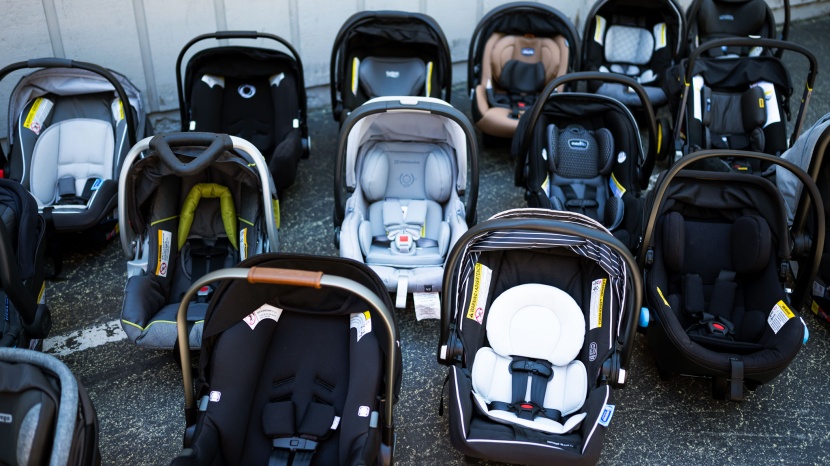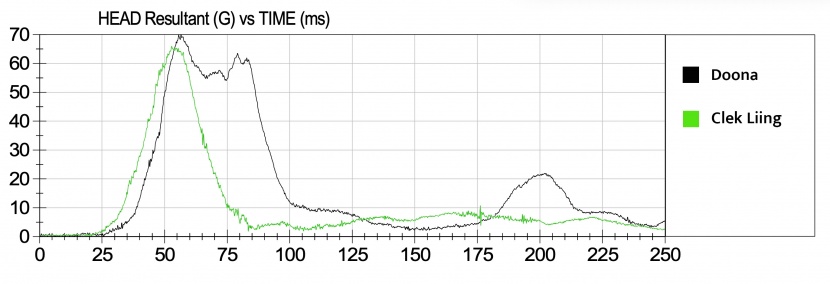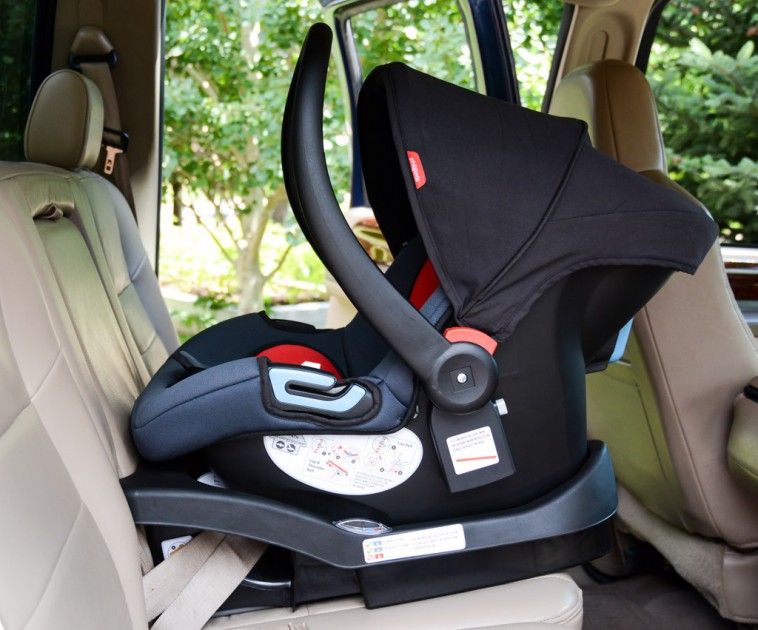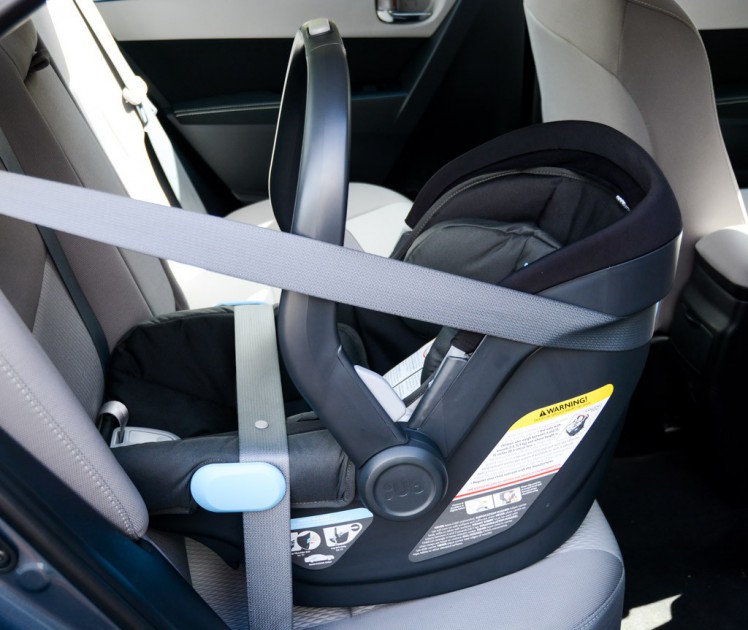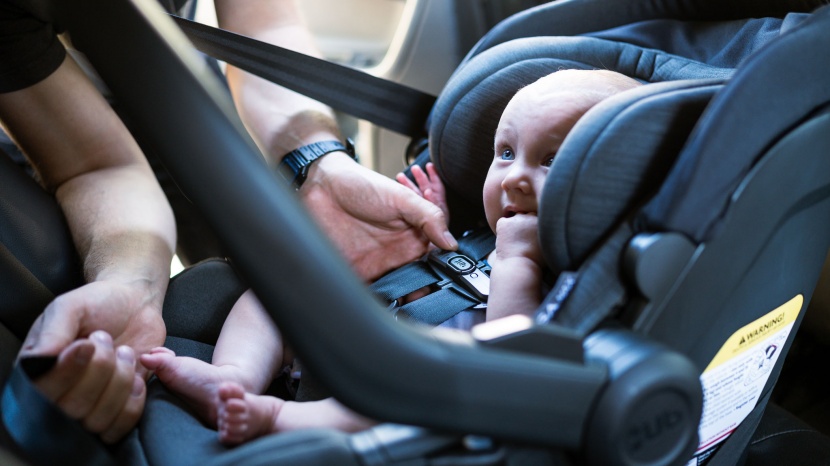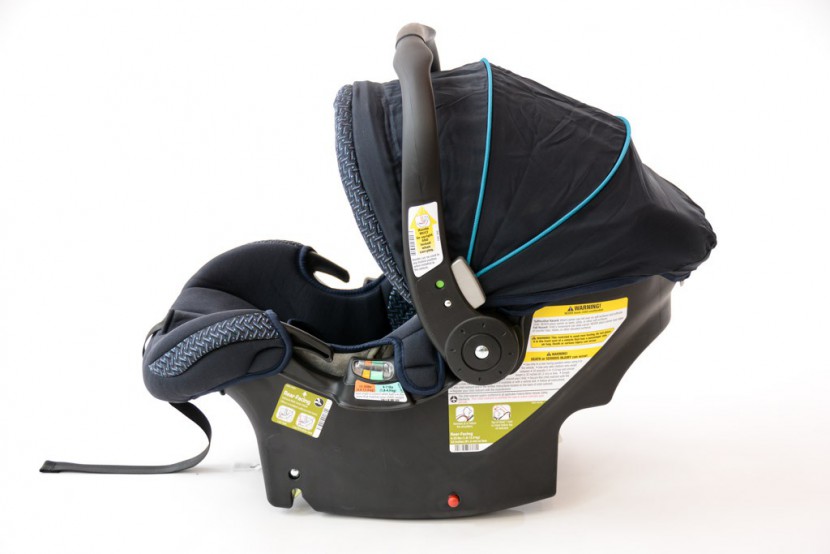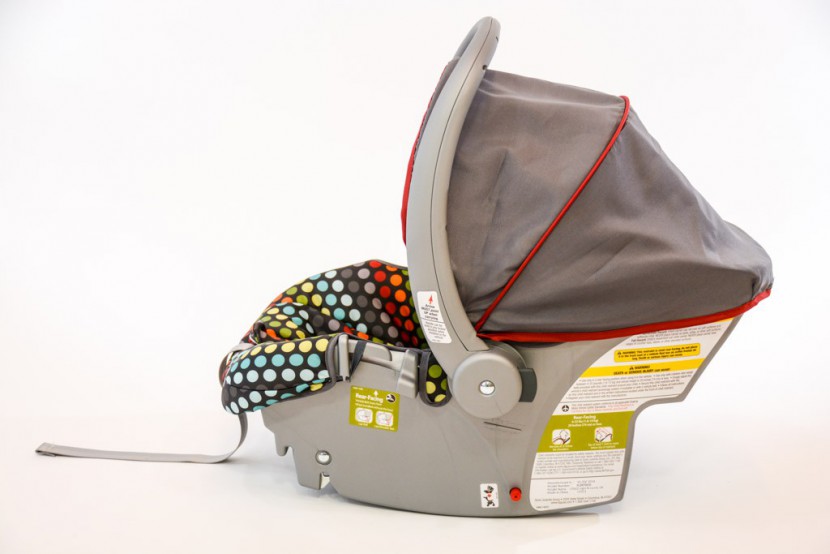Our infant car seat testing process begins with spending tens of thousands of dollars on professional crash testing of each seat at the same crash test facility used by the National Highway Transportation Safety Administration (NHTSA). But we don't stop there. Our review's infant seats are tested with months of side-by-side hands-on testing to evaluate their performance in each rating metric fairly. Each seat is used extensively by multiple testers and in multiple vehicles. We utilized very different vehicle makes and models in our primary testing of installation and ease-of-use to get a better overall feel of functionality and features for installation purposes. Each seat is used according to the manufacturer's manual.
At the outset of testing, we engaged with the MGA Research (the crash test facility used by NHTSA) and a certified Child Passenger Safety (CPS) Technician to help us develop a set of comprehensive tests on infant car seats. As with all of our reviews, the car seat test plan and testing process are reviewed and overseen by Dr. Juliet Spurrier, our founder, mother of two, and a board-certified Pediatrician.
Crash Testing Process
We analyzed the crash test data in professionally prepared reports based on sled crash tests. BabyGearLab contracted with the same crash test facility used by NHTSA to perform crash tests on car seats in a manner a little faster and with a sled more akin to modern-day vehicles than the FMVSS 213 standard. Our test results put car seats under more stress than the federal standard, and our results are not comparable to those obtained by other sources like NHTSA or Consumer Reports. We use the sensor data obtained during testing to comprehensively analyze each seat.
The GearLab Crash Test ProtocolOur crash testing protocol was developed with the following objectives in mind:
- Subject Child Restraint Systems (CRS) to a more severe and stringent stress test than the minimum US Federal safety requirements
- We used a speed of 32 mph (52 kph), which is beyond the FMVSS213 requirements of the upper limit of 30 mph (48 kph).
- Our updated standard utilizes a new test fixturing and sled that more closely represents the automobile seats used in modern vehicles.
- Specific testing configurations for load legs on infant car seats that are not part of the NHTSA FMS 213 testing standard but show benefits in crash test performance data
- Utilize crash test dummy sensor measurements, and provide video evidence of simulated crash testing, that informs our opinions on crash test performance of each seat, relative to competing seats, in an independent objective manner
Some Failures are Normal and to Be Expected
Given that our testing standard involves a higher speed crash test speed of 32 MPH, as compared to the FMVSS 213 standard speed of 30 MPH, we know that seats that are safe and pass the US Federal safety standard will sometimes crack or break in our more stringent test. This is to be expected and should not be interpreted as meaning that a car seat is unsafe. All seats passing the US Federal crash test protocol can be considered safe and compliant under the NHTSA safety standard. Our testing is designed to allow us to identify crash test performance that test data suggests may provide a higher margin of safety, and our “Crash Test” scoring reflects our opinions on crash test performance based on the actual crash test dummy sensor measurements. We will factor in any observations such as fractures of car seat components into our scoring, as part of our opinions on crash test performance. Those opinions are based on the things we observe in crash tests, but should never be interpreted as implying that a car seat is unsafe.
Crash tests utilize a test dummy with G-force sensors located at various points in the body. We analyzed the data recorded during testing from the head and the chest sensors. We then rate the seats in comparison with one another, apples to apples. The better the sensor data (lower results are better), for the head (HIC) and chest clip results the better it scored in our analysis. It is important to keep in mind that all of the seats comply with federal safety guidelines and should, therefore, be considered as safe. Still, each seat responded differently in sled testing and resulted in scores that we believe can help differentiate one seat from another for comparison and indicate those with an additional margin of safety.
Testing Ease of Installation
We installed each seat in different vehicles of varying sizes and manufacturers, ranging from a compact car to compact SUV. At least two different testers installed each seat according to the manual's instructions that came with the seat. A certified Child Passenger Safety technician audited each installation to determine if they were installed properly. The testers ranked each seat for ease of installation compared to the other seats in the group, and the scores are averaged across testers for a final score for the metric. These tests were repeated for installation using the LATCH system, the vehicle seat belt, and without the base.
Testing Ease of Use
For ease of use, the seats are used as they would be under normal circumstances and then ranked compared to the other eats in the group. We looked at the buckles and chest clips, tightening and loosening the harness, harness height adjustment methods, ease of attaching the carrier to the base, LATCH storage options, and handle and canopy functionality. Each seat was used multiple times to help determine how easy or difficult it really was to use.
Testing Comfort/Quality
For comfort and quality, we compared each seat side-by-side and ranked them compared to the other products in the group. We considered padding, fabric, additional positioning inserts, canopy size and durability, and the seat's overall fit and finish. Feedback from testers was averaged to determine the final score for the metric.
Testing Weight
Each seat base and carrier were weighed separately using the same scale by the same tester. The carrier weights were ranked from the lightest to the heaviest, and scores were assigned appropriately.

